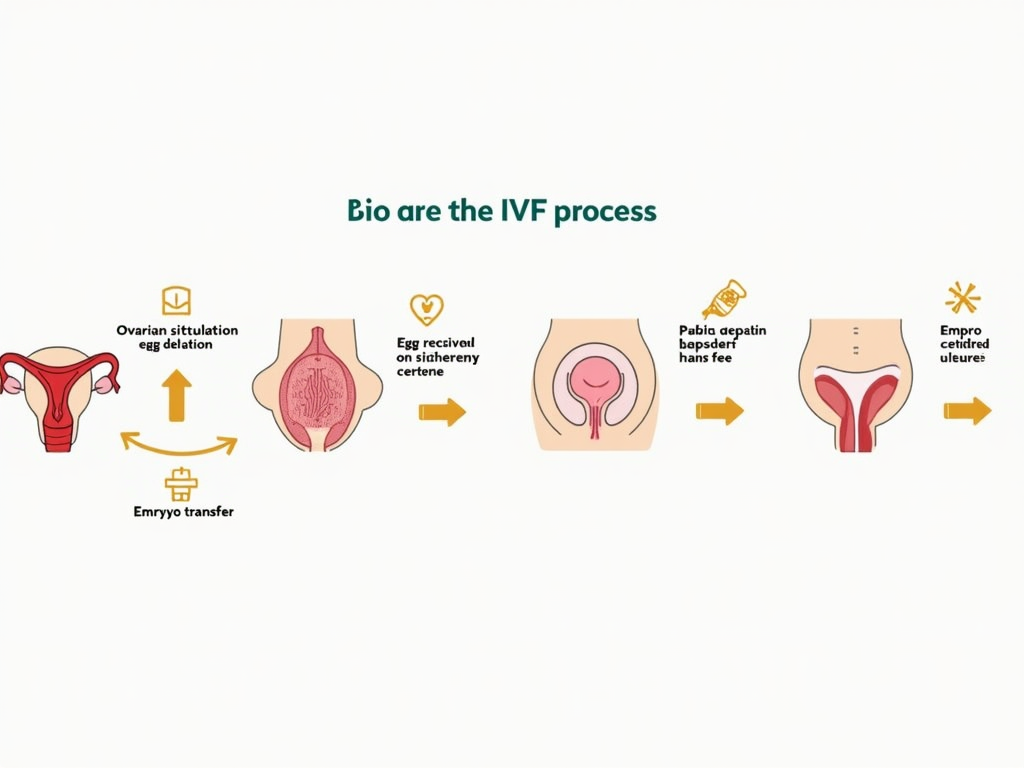The Science of IVF Explained: A Comprehensive Guide
April 6, 2025, 8:17 a.m.
In vitro fertilization (IVF) is a groundbreaking fertility treatment that has helped millions of couples worldwide achieve their dream of parenthood. This article delves into the science behind IVF, explaining the process, its success rates, and how to prepare for your first fertility consultation. Whether you're considering IVF or simply curious about this medical marvel, this guide provides valuable insights and practical advice.
What is IVF?
IVF is a process where an egg is fertilized by sperm outside the body, in a laboratory setting. The fertilized egg, or embryo, is then implanted into the uterus to initiate pregnancy. The IVF process involves several steps:
- Ovarian Stimulation: Medications are used to stimulate the ovaries to produce multiple eggs.
- Egg Retrieval: Eggs are collected from the ovaries using a minor surgical procedure.
- Fertilization: The eggs are fertilized with sperm in a lab.
- Embryo Culture: The fertilized eggs are monitored as they develop into embryos.
- Embryo Transfer: One or more embryos are transferred to the uterus.

Who Needs IVF?
IVF is often recommended for couples who have been trying to conceive for over a year without success. It can be particularly helpful for those with:
- Blocked or damaged fallopian tubes
- Male infertility issues, such as low sperm count or motility
- Unexplained infertility
- Genetic disorders that could be passed to the child
The Science Behind IVF
The science of IVF combines biology, technology, and medicine. Key scientific aspects include:
- Hormonal Regulation: Medications like follicle-stimulating hormone (FSH) and luteinizing hormone (LH) are used to control the menstrual cycle and stimulate egg production.
- Embryology: Specialists monitor embryo development, selecting the healthiest embryos for transfer.
- Cryopreservation: Unused embryos can be frozen for future use, preserving their viability.

Success Rates and Factors
The success rates of IVF vary based on several factors, including age, the cause of infertility, and the quality of the embryos. According to the American Society for Reproductive Medicine, the average success rate for IVF is around 30% per cycle for women under 35, decreasing with age.
Preparing for IVF
Preparing for IVF involves both physical and emotional readiness. Here are some tips:
- Consultation: Schedule a fertility consultation to discuss your medical history and treatment options.
- Lifestyle Changes: Maintain a healthy diet, exercise regularly, and avoid smoking and excessive alcohol.
- Emotional Support: Consider joining a support group or seeking counseling to manage the emotional aspects of fertility treatments.
Personal Stories
Jane and John had been trying to conceive for three years without success. After consulting with a fertility specialist, they decided to try IVF. Despite the challenges, including multiple cycles and emotional ups and downs, they finally welcomed their daughter into the world. Jane shares, 'IVF was tough, but it was worth every moment. Holding our baby made all the struggles fade away.'

Summary
IVF is a complex but highly effective fertility treatment that has transformed the lives of countless couples. By understanding the science behind IVF and preparing adequately, you can increase your chances of success. For more information, consider exploring the following resources:
- Fertility Treatments: An Overview of Options
- How to Prepare for Your First Fertility Consultation
- Success Rates of Fertility Consultations